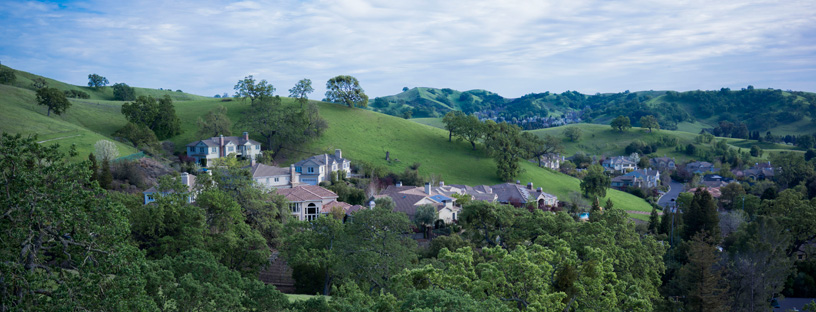The Air District is issuing the winter season’s third Spare the Air Alert for Thursday, January 1, which bans burning wood, manufactured fire logs or any other solid fuel, both indoors and outdoors.
-
About the Air District
- Advisory Council
- Air District Leadership
- Air District Logos
- Bay Area Clean Air Foundation
- Board of Directors
- Community Advisory Council
- Contracting Opportunities
- Departments
- Diversity Equity and Inclusion
- Enterprise Systems Catalog
- Hearing Board
- History of Air District
- In Your Community
- Job Opportunities
- Mission Statement
- Office of Civil Rights
- Speakers and Tours
- News & Events
- Online Services
- Publications
- Forms
- Public Records
- Contact Us
- Login
Contra Costa County

Learn about Contra Costa County - its climate, potential air pollution concerns, and current air quality. You can also view upcoming Air District events in Contra Costa County and read about local efforts to improve air quality.
Contra Costa County lies east of the San Pablo Bay, bounded by Alameda County to the south, San Joaquin County to the east, and Solano and Sacramento counties to the north. Four representatives sit on the Air District’s Board of Directors.
-
-
Air District has fined Martinez Refining Company and required enhanced air monitoring data transparencyDecember 23, 2025
The Air District has fined Martinez Refining Company, or MRC, and has required MRC to significantly enhance transparency for air monitoring data for air pollutants around its refinery in Martinez
Learn More -
Air District fines Chevron $900,000 for air monitoring violationsDecember 02, 2025
The Air District has fined Chevron $900,000 for failing to properly monitor air pollution emissions at its refinery in Richmond.
Learn More -
Spare the Air Alerts issued for Wednesday & Thanksgiving Day due to wood smoke pollution. Use of all wood-burning devices is prohibited.November 25, 2025
The Air District is issuing the winter season’s first Spare the Air Alerts for Wednesday, November 26, and Thanksgiving Day, which bans burning wood, manufactured fire logs or any other solid fuel, both indoors and outdoors.
Learn More -
-
-
-
11/5/2025 Air District awards $3 million to deploy new electric vehicle chargers in Richmond
November 5, 2025
-
10/28/2025 Air District fines Republic Services $159,000 for landfill gas violations
October 28, 2025
-
10/27/2025 Air District issues prescribed burn notice for October 27-31
October 27, 2025
-
10/22/2025 Air District awards $5M to electrify special education school buses
October 22, 2025
-
10/17/2025 Air District issues prescribed burn notice for October 17 - 24, 2025
October 17, 2025
-
10/9/2025 Air District fines Marathon Martinez Refinery $372,550 for violations
October 9, 2025
-
10/1/2025 Air District Board adopts wood burning and prescribed burning amendments to protect public health and reduce wildfire risk
October 1, 2025
-
9/27/2025 Air District issues air quality advisory for wildfire smoke through Sunday
September 27, 2025
-
9/25/2025 Air District receives first finance award for excellence in budget process
September 25, 2025
-
9/22/2025 Air District issues Spare the Air Alert for Tuesday
September 22, 2025
-
9/15/2025 Air District awards $1.18 million to San Ramon Valley Unified School District for new EV school buses, charging infrastructure
September 15, 2025
-
9/11/2025 Air District opens Clean Cars for All program with $10 million in funding
September 11, 2025
-
9/10/2025 Air District strengthens leadership team, staffing to deliver on permitting priorities & strategic goals
September 10, 2025
-
9/2/2025 Air District fines Chemtrade West US LLC $160,000 for air quality violations
September 2, 2025
Climate
Temperatures in and around the San Ramon and Diablo Valleys are warm in the summer and cool in the winter, largely because of their distance from the moderating effect of water bodies and because the California Coast Range blocks marine air flow into the valleys. The Carquinez Strait region remains temperate due to its proximity to water and oceanic air flows. In winter, average daily temperatures are mild, with tule fog common at night. Average summer temperatures are typically mild overnight and warm during the day, with cooler temperatures and stronger winds more common along the western coast. Wind speeds are generally low throughout the region and winds typically blow from northwest to southwest. However, strong afternoon gusts are common in the northern portion of the county around the Carquinez Strait. Annual rainfall averages between 18 and 23 inches across the county.
Interactive Air Monitoring Stations Map
Air Quality in Contra Costa County
Ozone and fine particle pollution, or PM2.5, are the major regional air pollutants of concern in the San Francisco Bay Area. Ozone is primarily a problem in the summer, and fine particle pollution in the winter.
Ozone and PM2.5 infrequently exceed health standards in the portion of Contra Costa County west of the East Bay hills. The San Francisco Bay keeps air temperatures above freezing in winter and well below 100 degrees on even the warmest summer days.
In eastern Contra Costa County, summer afternoon temperatures frequently approach triple digits, spurring ozone levels to exceed health standards. In winter, PM2.5 can be transported westward through the Carquinez Strait from the Central Valley where it adds to wood smoke, causing health standards to be exceeded.
Last Updated: 4/21/2017

